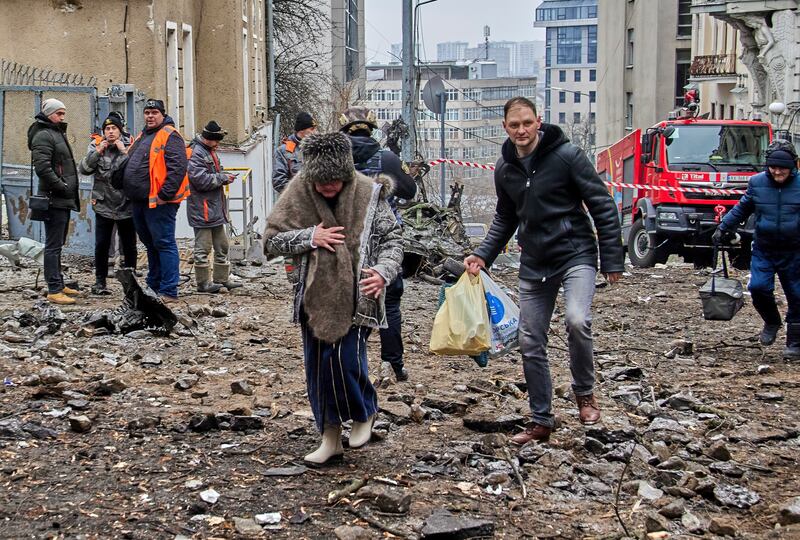Moody's Investors Service downgraded Ukraine's ratings deeper into junk, or non-investment grade territory as a result of the mounting pressure on its finances amid conflict with Russia.
The country's foreign- and domestic-currency long-term issuer ratings and foreign-currency senior unsecured debt ratings were cut to Ca from Caa3 and changed the outlook to stable from negative, the rating agency said on Saturday.
A Ca rating is non-investment grade which means the country and companies in it will find it more difficult to access capital markets and raise funding.
The downgrade of the ratings “is driven by the effects of the war with Russia that are likely to pose long-lasting challenges to Ukraine's economy and public finances,” Moody’s said.
“These challenges increase risks to government debt sustainability, making a debt restructuring with significant losses for private-sector creditors very likely.”
The stable outlook reflects balanced risks at the Ca rating level, which is consistent with a recovery in the event of default typically in the order of 35 to 65 per cent.
A cessation of the military conflict leading to a significant resumption of economic activity over the near term might result in lower losses in case of a restructuring, while in case of a further escalation of the military conflict, the losses for private sector investors could be larger than implied by a Ca rating, it added.
Ukraine's economy has been ravaged since it was invaded by Russia in February. According to the Kyiv School of Economics, the estimated damage to infrastructure stood at $138 billion as of December 2022, equivalent to 70 per cent of 2021 GDP.
Moody's estimates that real GDP contracted by around 30 per cent in 2022 amid very large costs in terms of human losses and population displacement as well as the significant damage to the country's economy.
“While the private sector has shown some degree of resilience and gradually adapted to the challenging circumstances, and significant financial support from donors is being provided for repairs and reconstruction, the war will cause long-lasting damage to the productive capacity of key economic sectors, particularly as a result of the recent intensification of the military attacks targeting critical infrastructure,” Moody’s said.
The government deficit excluding grants is estimated to have reached almost 30 per cent of GDP in 2022 but the provision of significant external support led to an estimated smaller figure of 17 per cent of GDP, the agency said.
The budget will remain under significant pressure in 2023 due to large defence and social spending.
Ukraine's Zelenskyy lands in Belgium ahead of EU summit meeting

The current account posted a surplus of 5.7 per cent of GDP in 2022 as the surplus in the income balances due to external grants more than offset the large trade deficit, it said.
In 2023, Moody's expects the current account balance to move into a small deficit, mainly driven by a widening trade deficit reflecting reduced export capacity and sustained imports, in particular of food, fuel, and materials for repairs.
Moody's projects very large financing needs of around 20 per cent of GDP in 2023, which are expected to be mainly covered through external donor support and the remaining by issuances on the domestic market.
According to the International Monetary Fund, Ukraine could receive as much as $40 billion in official financial support in 2023 under a baseline scenario of war prolonging, mostly coming from the US and the European Union.
In October, the IMF has approved the release of $1.3 billion in emergency funding for Ukraine, to help the war-stricken country meet its "urgent" economic requirements.
Moody’s also said Ukraine's government debt burden is rapidly rising with risks to the debt trajectory tilted to the upside. It estimates that debt-to-GDP increased by almost 35 percentage points to 82 per cent of GDP at end-2022 and projects it will exceed 90 per cent of GDP at the end of 2023.
“While the debt trajectory is subject to a significant degree of uncertainty depending on the evolution of the military conflict, it also faces risks from further exchange rate depreciation given the large share of the foreign currency-denominated debt.”







